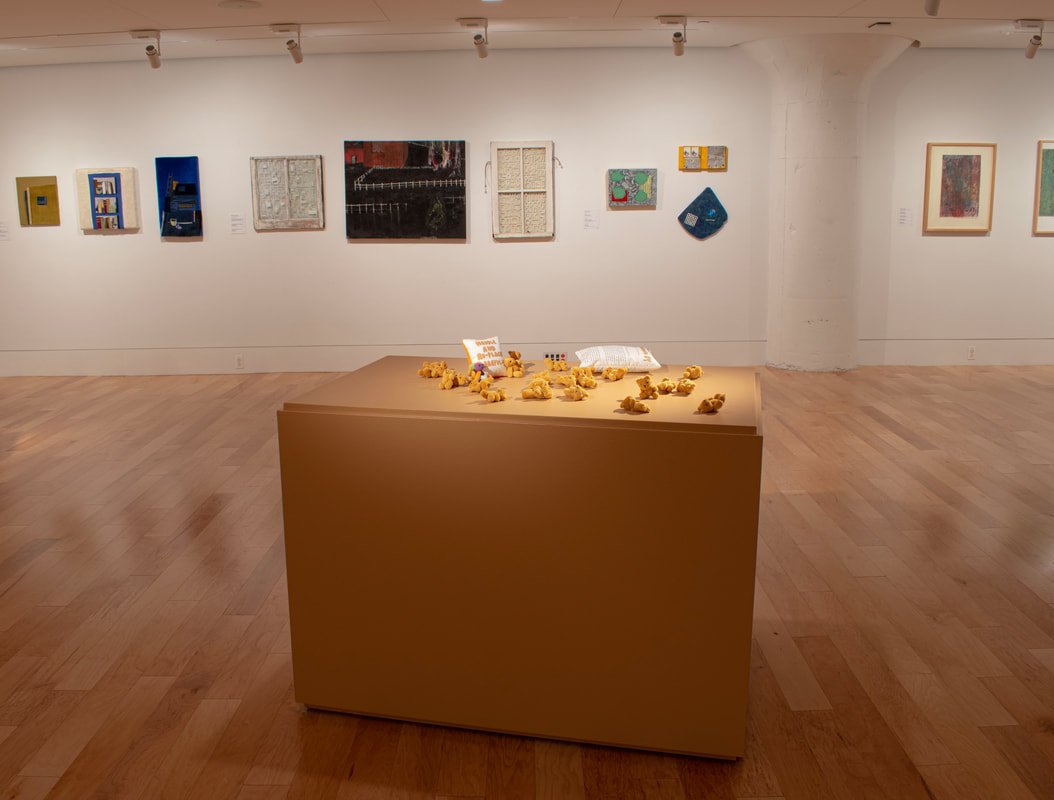What makes something handmade? Have you ever considered mass-produced goods to be handmade?
Handmade by unites my studio practice and plushie making hustle to challenge western binary perceptions of handmade as separate from production, and how this perception sustains harmful exploitative frameworks of labor, production, consumption, and value in Americana. This exhibit is a visual encounter with my ongoing research and reflection on these issues as it relates to my studio practice and choices as a maker and consumer.
We are taught to assume that “mass-production” means “made by a machine,” but this generalization is an illusion – emitting the human hands that create the objects we consume. Corporations intentionally keep their production practices as invisible as possible – so that profits can be made at the expense of human lives. It’s also important to note that most handmade objects are made from mass-produced materials. What makes something handmade? And who gets to claim that their hand was in the making?
Taking advantage of the elusively of production, many companies have adopted the label handmade to attract customers – and technically, they are probably not lying. They are admitting that their mass-produced goods are in fact made by humans, but instead of consumers interrogating them about the immense human labor involved in this production, buyers believe they are living and buying sustainably based on the label, and the company makes profit once again – using an ugly truth as a selling point. The irony in this dichotomy of corporate production vs. individual production is that both are handmade, but in one instance, we do not know the maker. It’s this fourth wall of production that I’m interested in breaking down- to consider what handmade really means, and how this elusivity of production lays the groundwork for the exploitation of labor for makers around the world – both in mass-production and individual production.
Handmade by is an exhibition of 24 bears that I did not make and 1 that I did. The bears were ordered on Amazon from a company based in China for $1.49 each - each clearly handmade considering their differing characteristics (though not labeled as such). Showcased on a pedestal, I intend for viewers to consider the immense amount of labor involved in making each bear from raw materials - and the impossibility of that labor or acknowledgement ever being repaid to the individual(s) who sewed them together. I invite you to pick up the bears and feel their materiality and consider their elusive history. Do you consider these objects to be handmade?
What if we considered mass-produced goods to be handmade and treat those objects with the same care and respect that this term implies; could we reduce waste based on perceived value?
Medium
Mini teddy bears, custom printed fabric, polyester fiberfill, fishing line, latex paint
Year
2023





